News Archive
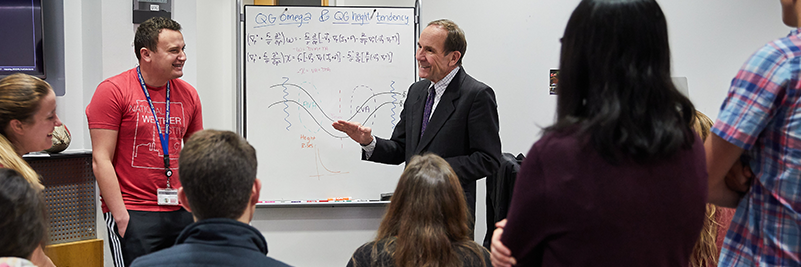
OutstandingColleges.com, a website dedicated to "providing people with useful information to help them make the right decision when selecting what school to go to" has ranked OU as the best college to study meteorology in the nation. It cites OU's strong research program and students' opportunity to work with faculty on cutting-edge projects. OU also recently claimed the top spot in the nation for research and development in atmospheric sciences and meteorology in the leading report for higher education research and development expenditures, or HERD survey. OU is #1 in the nation in research expenditures in that category and #6 in the overall sector of Geosciences, Atmospheric Sciences and Ocean Sciences.

Pictured is ARRC student Rachael Cross teaching K-12 students about weather radar using the RaXPol mobile radar.
These K-12 students were participating in the OU Mini College on July 26, 2022 to learn about different areas of study offered at the University of Oklahoma.
Rachael is a PhD student in the School of Meteorology, advised by Dr. David Bodine.
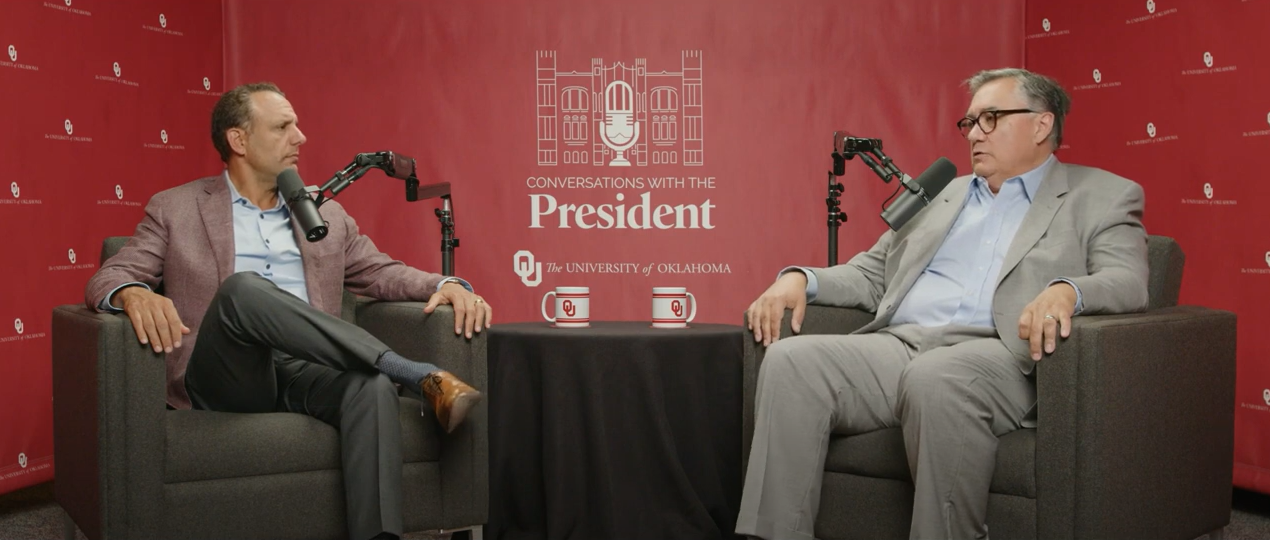
In episode 3 of the new podcast series "Conversations with the President," OU's fifteenth president Joe Harroz meets with VPRP Tomas Diaz de la Rubia to discuss strategies for excellence in research at the University of Oklahoma. They reference the Advanced Radar Research Center as the top lab in the nation for radar innovations. Link

ARRC/ECE M.S. student Jonathan Knowles recently competed in the 22nd IEEE Wireless and Microwave Technology Conference (WAMICON) student paper competition, where he placed 3rd. This year's WAMICON took place in Clearwater, Florida, April 27 & 28, 2022. Jonathan was the lead author on the paper titled "Design of a Symmetric Lumped-Element Bandpass Filtering Attenuator (Filtenuator)," along with his advisors, Drs. Jay McDaniel and Hjalti Sigmarsson.
Jonathan has also been selected as our July 2022 ARRC Student of the Month, so we have included more information about him here:
How long have you been a part of the ARRC:
• I started at the ARRC in the Spring of 2019 as an undergraduate research assistant conducting research on synthetic aperture radar system design and packaging. In the Spring of 2021, I started my masters and continued at the ARRC as a graduate research assistant focused on filtering attenuators (filtenuators). In the Spring of 2022, I graduated with my masters and am now pursuing my Ph.D. with Dr. McDaniel.
Scholarships/journal awards/publications etc. that you have received:
• The Intel “Growing the Legacy” Scholarship (2018-2020)
• The Cobell Scholarship (2018-Present)
• ARRC Student Conference Paper Award (2022)
• Co-founder of the OU chapter of the Students for the Exploration and Development of Space (SEDS) student organization, which was named the Best New Chapter of the Year at the SpaceVision 2020 conference
• J. M. Knowles, H. H. Sigmarsson, and J. W. McDaniel, “Design of a Symmetric Lumped-Element Bandpass Filtering Attenuator (Filtenuator),” 22nd IEEE Wireless and Microwave Technology Conference (WAMICON), pp. 1-4, 2022.
• J. M. Knowles, H. H. Sigmarsson, and J. W. McDaniel, “Generalized Theory and Realization of Continuously Loss-Programmable Filtering Attenuators,” IEEE Transactions on Microwave Theory and Techniques (TMTT), 2022. (under review).
Current Research:
• My current research is on continuously loss-programmable and frequency-agile filtenuator theory and design. This newly developed concept allows for a single component to change passband attenuation in real-time for large dynamic range system requirements, while simultaneously providing the desired filtering characteristics. The project is funded by the Kansas City National Security Campus (KCNSC), which is focused on developing novel components for future low cost, size, weight, and power (C-SWaP) radar systems.
What do you like to do in your free time:
• I enjoy hanging out with my friends and family, watching and playing sports, reading, building stuff, and playing with my dogs.
Plans for after graduating:
• I hope to pursue a career in academia as an assistant professor after graduation, so that I can be a mentor to the next generation of engineers and scientists (especially Native American students) while also continue working on exciting research.
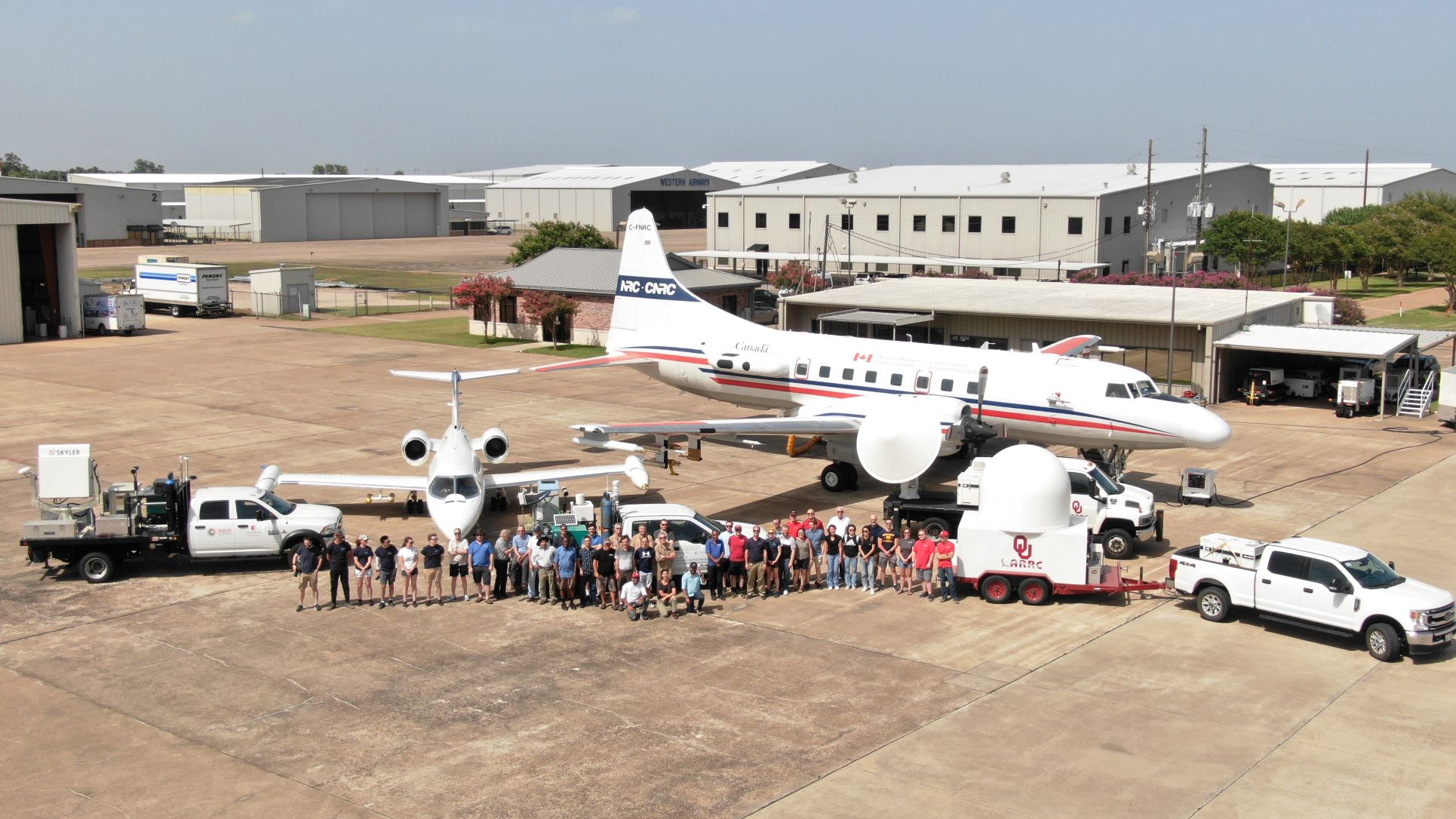
The ARRC’s mobile radars are participating in the National Science Foundation-supported ESCAPE field campaign in Houston, Texas to study the lifecycle of thunderstorms that form along the sea breeze. In the summer, thunderstorms frequently form along the sea breeze in the Houston area. In addition, these thunderstorms form in air masses with different concentrations of aerosols, which are very small particles on which cloud droplets can form.
Houston is a unique experimental setting since there are air masses near Houston with abundant aerosols that can be compared to lower concentrations of aerosols over nearby rural areas and the Gulf of Mexico. The science goal is to understand how the lifecycle and associated properties of thunderstorms differ within each of these different areas to better understand the impact of aerosols on thunderstorms.
The ARRC is deploying two mobile radars, the Rapid X-band Polarimetric Radar (RaXPol) and the PX-1000 radars, to obtain information about the precipitation and winds within storms. The radars are collecting both rapid-scan observations of thunderstorms as well as dedicated vertical cross sections to better understand storm structure. RaXPol is part of the NSF Community Instruments and Facilities program, which can be requested to support NSF field campaigns. The ARRC mobile radars are deployed alongside aircraft that fly within clouds and their surrounding environments, as well as other remote sensing and in-situ instrumentation sponsored by the NSF and the Department of Energy's TRACER programs.

Josh Short has been selected as our June Student of the Month! He is an M.S. student in the School of Electrical and Computer Engineering, as well as a Graduate Research Assistant.
Josh is advised by Dr. Nathan Goodman. His current research focuses on optimization of tracking algorithms for MIMO phased arrays.
Asked about how he spends his free time, Josh said that he enjoys playing baseball and softball with his son and daughter, and doing carpentry work around the house. After graduation, he plans to continue to work at Boeing on next-generation tracker algorithms.
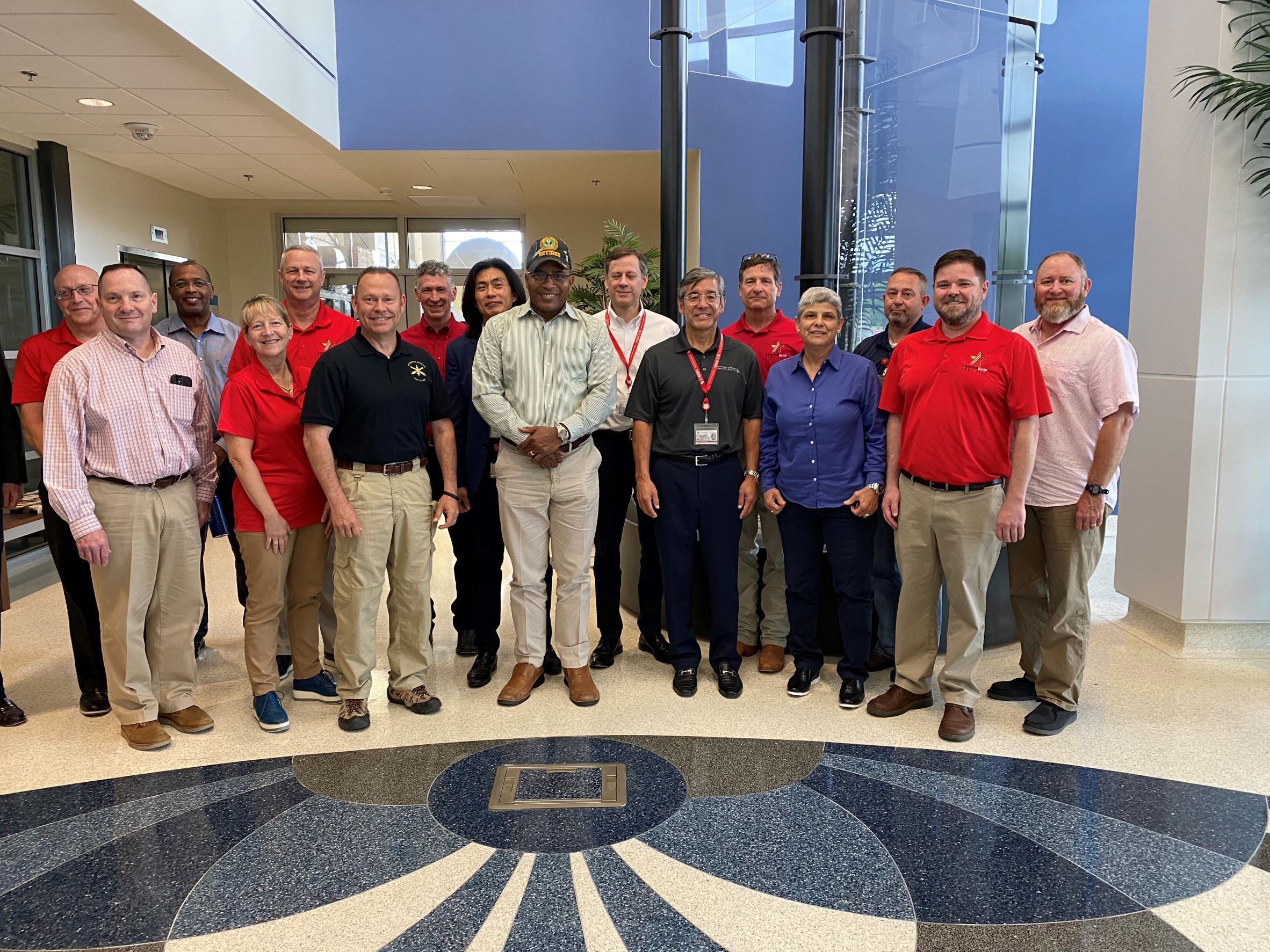
The ARRC was pleased to welcome the Executive Leadership Program group from Fort Still on May 13, 2021. The group toured the Radar Innovations Lab, and met with ARRC leadership and faculty for an overview of our center.
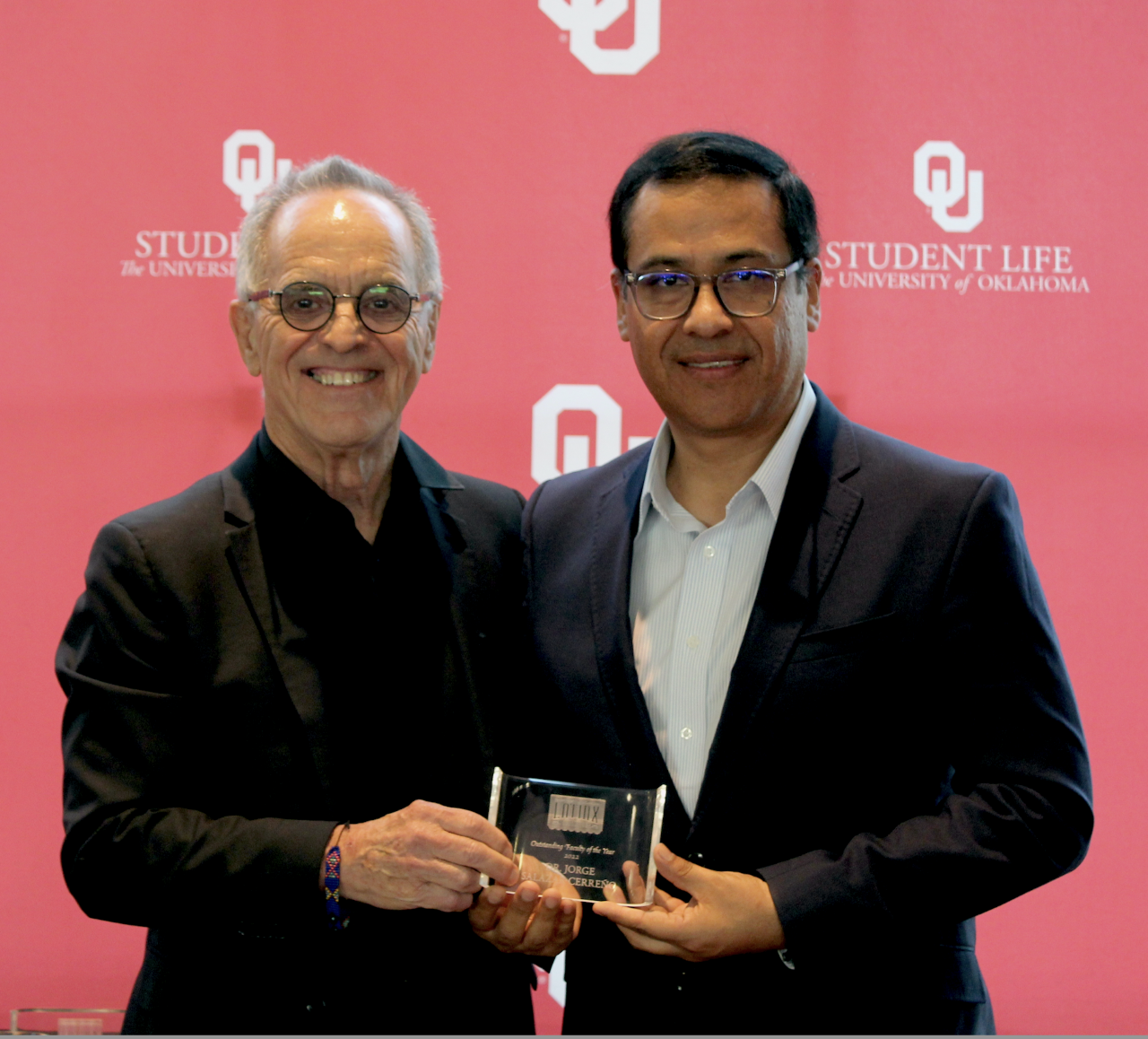
Congratulations to Dr. Jorge Salazar-Cerreno, ARRC/ECE Faculty, for receiving the prestigious
2022 Latinx Outstanding Faculty of the Year Award.
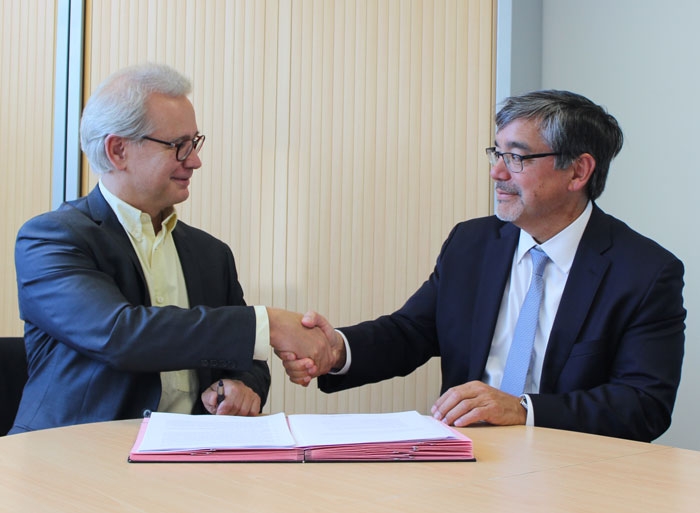
The University of Oklahoma and research universities in France have signed a memorandum of understanding to facilitate cooperation between scientists to advance observations and studies of the atmosphere and radar technologies that will lead to improved weather, climate and air quality forecasts worldwide.
The agreement brings together radar and meteorology experts from the University of Oklahoma through its Advanced Radar Research Center (ARRC) and the College of Atmospheric and Geographic Sciences with scientists from the Laboratoire Atmosphères, Observations Spatiales (LATMOS), a French research laboratory of the Université de Versailles Saint-Quentin-en-Yvelines, Université Paris-Saclay, Sorbonne Université, Centre National de la Recherche Scientifique and Institut National des Sciences de l'Univers.
Pictured are Bob Palmer (right), executive director of the ARRC and Philippe Keckhut (left), the former director of LATMOS, at a meeting in 2018. Read more from a press release here.
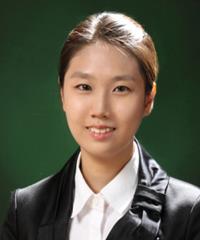
Hyeri Kim is a PhD candidate in the School of Electrical Engineering, advised by Drs. Tian Yu and Boonleng Cheong. Her publications and awards include:
• (Submitted) Hyeri Kim, Tian-You Yu, and Boon Leng Cheong, “Weather Radar Velocity Unfolding Using Convolutional Neural Networks”, 2022 11th European conference on radar in meteorology and hydrology, Locarno, Switzerland, 2022
• Hyeri Kim, Boon Leng Cheong, and Tian-You Yu, “Velocity Unfolding Using Convolutional Neural Network for X-band Doppler Weather Radar”, 39th AMS Conference on Radar Meteorology, Nara, Japan, 2019• Hyeri Kim, Mi-Kyung Suk, Sung-A Jung, Jong-Sook Park, and Jeong-Seok Ko, "Sensitivity Analysis of Sampling Number on Quality of Polarmetric Measurements from S-band Dual-Polarization Radar.", AGU Fall Meeting, San Francisco, United States, 2016
• Hyeri Kim, M. K. Suk, K. Y. Nam, J. H. Kim, and J. S. Ko, “Performance analysis on terrain-adaptive clutter map algorithm for ground clutter mitigation in Korea”, 37th AMS Conference on Radar Meteorology, Norman, Oklahoma, United States, 2015
• (Award) Korean Meteorological Administration (KMA) Administrator Citation, March 2016
Asked about her current research, Hyeri said, "I’m currently developing a weather radar velocity dealiasing algorithm using a machine-learning technique called Convolutional Neural Networks (CNN). This method tries to mitigate the Doppler dilemma, which is a long-lasting issue in weather radar. Especially with X-band radar, velocity aliasing is a more severe issue than in S-band radar due to the shorter wavelength. Preliminary results show a promising potential compared to the traditional unwrapping methods.
Regarding her hobbies and plans for after graduation, Hyeri noted, "I enjoy taking a walk, hiking, hanging out with friends, and playing the piano. After completing my Ph. D, I plan to go into academia in radar/machine learning.